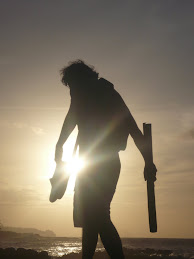Students had an impassioned discussion today about Permaculture Ethics, Mongolian Culture, and Government Law this morning in Kat’s first class. Errka, the skinny smiling woman who was out host out in Tudvetey summed things up beautifully… [to paraphrase]:
“The Law sets out rules for what is right and wrong so that we can live together as a community. Our Culture guides us through all the nuances and grey areas that the Law cannot cover.”
It warms my heart to observe how readily Permaculture Ethics was accepted by the group.
Ever heard the saying:
‘Water, water everywhere, and not a drop to drink…’?
Well, the Mongolian version of that is:
‘Horseshit, horseshit everywhere, and not a drop to spare.’
Most of the dung here is left to dry and collected as fuel to burn through the cold winters. What is left behind provides just enough nutrient in the sandy soils for the pastures to support the grazing herds of livestock - a crucial part of the delicate balance between herders, their animals, and the Steppe.
At first glance, it would appear to be a permie’s utopia, a buffet of rich manures laid out on the grassy plains for us to collect, compost, and grow crops with.
Look a little deeper though, and we realize that we must take one step back in order to move forward:
- Before we can start to harvest dung as a fertillizer, we need to replace this fuel with another fuel source. A bumper potato crop will not keep your family warm over the winter.
- Pit latrines dug just above the water table in urban and rural settlements risk contaminating drinking water, and wastes a valuable resource that could be composted and used to safely fertilize timber and fruit tree crops.
- If soum communities started to harvest the manures lying in the fields then the pastures will be unable to support current levels of livestock, which are already at the land’s capacity.
- Community grazing strategies will be needed in order to properly manage pasture to allow it to recover and regenerate, so that over time soil fertility and resilience is built up, increasing the land’s ability to hold grazing animals.
...Compost prac today was fun, we used dried weeds, sawdust from the firewood pile, freshly cut green weeds, and of course manure from our poo buffet conveniently stored in one of the abandoned concrete buildings on the compound.
Interesting to note how quickly the Co-Operative Leaders jumped in to grab tools and start shovelling shit, while the Aid Agency Staff tended to hang back, take photos and write notes.
When we go back to de-brief, the Agronomists in the group get hung on calculations and formulae for converting 25:1 carbon:nitrogen ratios into weight quantities, and almost lose the lesson. Rick ends up jumping in front of the whiteboard: FORGET THE FORMULA JUST USE YOUR EYES AND HANDS TO FEEL WHAT THE COMPOST HEAP IS TELLING YOU!!!
- Too hot, too much nitrogen. Add more carbon materials like the sawdust and dried weeds.
- Too cold, not enough nitrogen. Add more nitrogen-rich materials like manure and green weeds. Better yet, pee on the compost stack to help activate it.
Information without understanding will overload and paralyze you.
Understanding a concept allows you to process, filter and organize information in a way that empowers you to make an informed decision and act upon it.
It is the difference between
- TEACHING vs. TELLING
- EMPOWERING vs. ENABLING
- KNOWING vs. UNDERSTANDING




LOVE this explanation! :)
ReplyDeletep.s. hello brother!
ReplyDeletejah mon, simple is best!
ReplyDelete